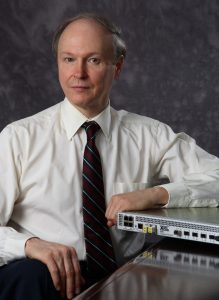The ousted co-founder of Cisco Systems, who is known for pioneering the widespread commercialization of local area network (LAN) technology, is an American computer scientist, who linked 5,000 computers across a 16-square-mile (41 km2) campus area, at the time when it even connecting the computers of two different buildings was an unheard thing.
Early Life
Bosack was born in 1952, in Pennsylvania. He completed his school education from La Salle College High School in 1969 and joined the Wharton School in the University of Pennsylvania to get a bachelor’s degree. After graduating, Bosack joined DEC as a hardware engineer. But, as he had applied in the Stanford University for higher education, he left his job, to join the university to pursue computer science, as soon he got accepted in the university.

In 1981, while studying at the Standford University, he was appointed as the support engineer for a project to connect all of Stanford’s mainframes, minis, LISP machines and Altos. At the university, he met his future wife and partner, Sandy Lerner. Lerner was working as the director of computer facilities for the Stanford University Graduate School of Business. The two started dating, and the couple got married in 1980.
Founding Cisco
While working as the support engineer for Standford University, Bosack, along with his wife, started experimenting on the same, secretly at his home using Stanford’s network. The two worked as partners and invented an Advanced Gateway Server; the revised version of the Stanford router built by William Yeager and Andy Bechtolsheim. To commercialise the router, they founded Cisco Systems and received the license for selling the router. The company was named on after the city San Francisco.
The router was able to effectively connect different hardware, like an Apple Macintosh, Unix workstation as well as an IBM mainframe, supporting multiple protocols. According to the legends, the Bosack and Lerner had invented the first such router to connect the computers of two different buildings of Stanford University, that used different networks, so that they could share emails through it.
For the first two years of the company, Bosack operated it from the garage of his house, and the medium of marketing was word of mouth. Despite, he was able to get contracts worth $200,000, only in the first month of starting the company. As the company was growing, Bosack appointed Greg Satz and Richard Troiano, for programming and for sales for the company, respectively.
In the year 1988, venture capitalist Don Valentine of Sequoia Capital invested $2 million in the start-up, and the company focused on the bigger commercial market. In 1990, the company went public, generating $70 million annual revenue. Sequoia Capital, having a share in the company, appointed John Morgridge as the new CEO of the company. The step was taken to increase the company growth. The joining of the new CEO also made Bosack and Lerner quit the company. At the time they left the company, they had two-thirds of the stakes in Cisco, which they sold for about $170 million dollars.
Personal Life
Bosack and Lerner got divorced in 1990. Currently, Bosack is retired and living in his home state of Pennsylvania. For his contribution to the field of computer science, he won the Computer Entrepreneur Award in 2009. For a long period of time, he held a significant position in the companies like AT&T Bell Labs and Digital Equipment Corporation. He also played a key role in the development of emerging network technology driven by the U.S. Department of Defense. He also gets the credits for creating new in-line fibre optic amplification systems, capable of obtaining unprecedented data transmission latency speeds of 6.071 milliseconds over 1231 kilometres of fibre.
Bosack along with his ex-wife Lerner, founded a charitable organisation, with the 70% of the money they received after selling their Cisco stocks. The foundation works towards animal welfare and finances various science projects.

Yashica is a Software Engineer turned Content Writer, who loves to write on social causes and expertise in writing technical stuff. She loves to watch movies and explore new places. She believes that you need to live once before you die. So experimenting with her life and career choices, she is trying to live her life to the fullest.